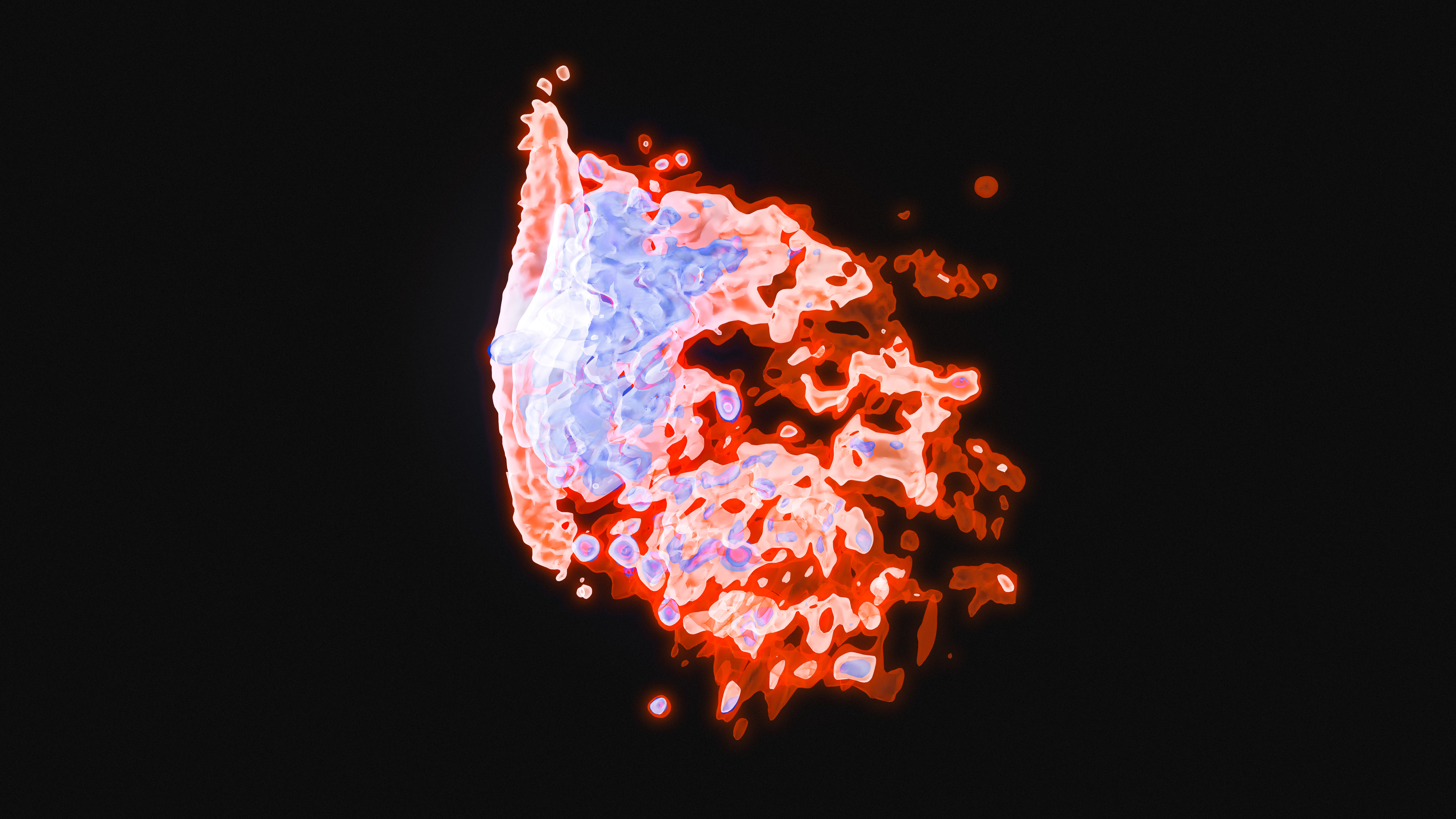
Sciences & Technology
Supermassive black hole controls star birth

Scientists have discovered a previously unknown way that so-called jellyfish galaxies fuel supermassive black holes - helping our understanding of the evolution of the Universe
Published 17 August 2017
For the first time, astronomers have observed jellyfish galaxies ‘feeding’ supermassive black holes.
The discovery is a key clue in the long-standing puzzle to understand how galaxies form and change in our expanding and evolving Universe.

As their nickname suggests, jellyfish galaxies appear to have tentacles, which are actually streams of gas and stars that extend out from the galaxy body.
The tentacles form because the gas within the galaxy is peeled off by a force called ‘ram pressure stripping’.
This happens when a galaxy moves into the hot gas of a galaxy cluster, falling into it at high velocity. The dense gas that fills the cluster acts like a strong wind on the galaxy gas and it strips it away to create the tails.

Sciences & Technology
Supermassive black hole controls star birth
This new research shows that ram pressure funnels the gas towards the galaxy centre, feeding the black hole, revealing a previously unknown mechanism by which the black holes can be fed.
An international research team led by the INAF-Astronomical Observatory of Padova in Italy made the finding, now published in the journal Nature.
Dr Benedetta Vulcani from the University of Melbourne was the only Australian astronomer on the study, and says that jellyfish galaxies are key to understanding the evolution of our Universe, as they are galaxies caught in the middle of a dramatic transformation.
“It is now well established that most, if not all, galaxies host at their centre a supermassive black hole of a few million to a few billion solar masses,” says Dr Vulcani.
“We want to understand why only a small fraction of supermassive black holes are active. Supermassive black holes are present in almost all galaxies, so why are only a few accreting matter and shining brightly?”
And it appears that cosmic jellyfish are the answer. But they are rare - to date, just over 400 candidate jellyfish galaxies have been found.
Dr Vulcani explains that jellyfish galaxy tentacles extend for tens of thousands of light-years beyond their galactic discs.

“The process is named ‘ram’ because it is very powerful.”
In the stripped gas, new stars are formed. Hence, the tails are visible also in the optical light, emitted by the stars.
For this research, the team identified the galaxies with the longest or more extended ‘tentacles’.
They found that six out of the seven jellyfish galaxies were found to host a supermassive black hole at the centre, feeding on the surrounding gas.
Team leader Bianca Poggianti from the INAF-Astronomical Observatory of Padova says this fraction is unexpectedly high — among galaxies in general the fraction is less than one in ten.

Sciences & Technology
Revealed: The billion-year soundbite
“This strong link between ram pressure stripping and active black holes was not predicted and has never been reported before.”
It seems that the central black hole is being fed because some of the gas, rather than being removed, reaches the galaxy centre.
These findings suggest a novel mechanism for gas to be funnelled towards the black hole’s neighbourhood. This result is important because it provides a new piece in the puzzle of the poorly understood connections between supermassive black holes and their host galaxies.
Professor Poggianti adds that the current observations are part of a much more extensive study of many more jellyfish galaxies mostly in clusters, but also includes some in groups and isolated, that is currently in progress.
“This survey, when completed, will reveal how many, and which, gas-rich galaxies entering clusters go through a period of increased activity at their cores,” says Professor Poggianti.
“Most importantly, it will shed light on whether ram pressure stripping can be effective also in groups and to observe what other processes can be at work in less crowded regions of the Universe to remove gas from galaxies.”

The team used the MUSE (Multi-Unit Spectroscopic Explorer) instrument on the Very Large Telescope (VLT) at the European Southern Obervatory’s Paranal facility in Chile to study how gas can be stripped from galaxies in optical light. Observations with different instruments at different wavelengths allow astronomers to look at the galaxies in different ways, creating a more complete picture of how the gas is moving.
“This is a field of research where we might expect other surprises, and it is pretty much uncharted territory,” says Dr Vulcani.
Banner image and video: NASA, ESA, and M. Kornmesser, acknowledging Ming Sun (UAH) and Serge Meunier